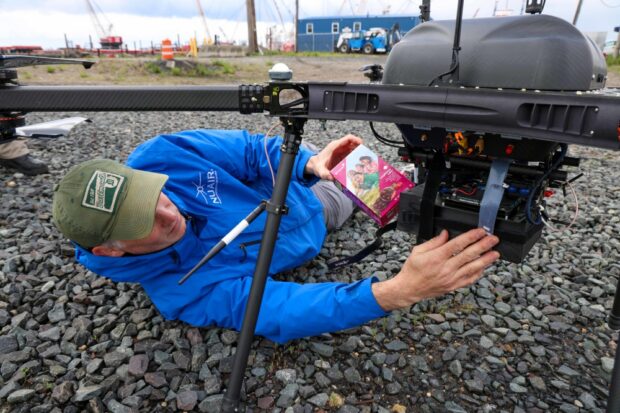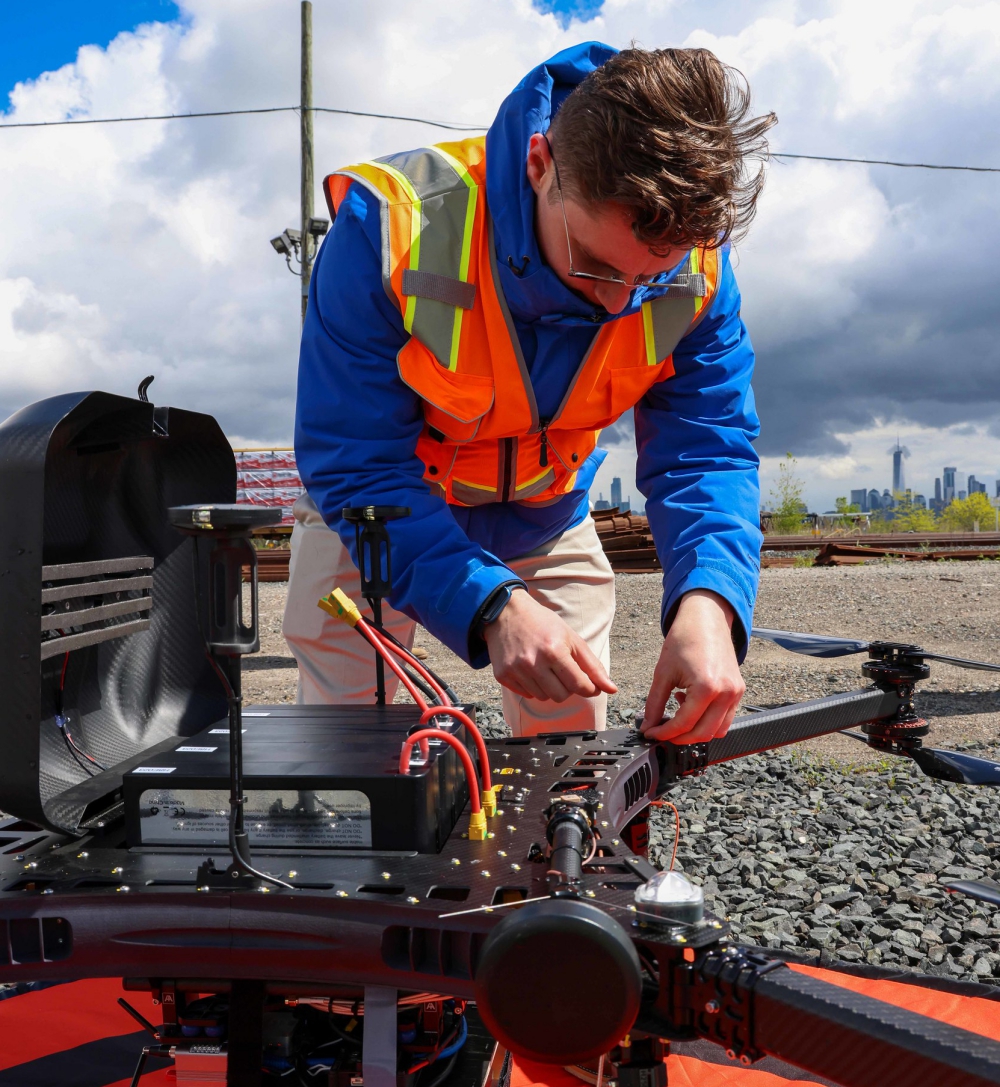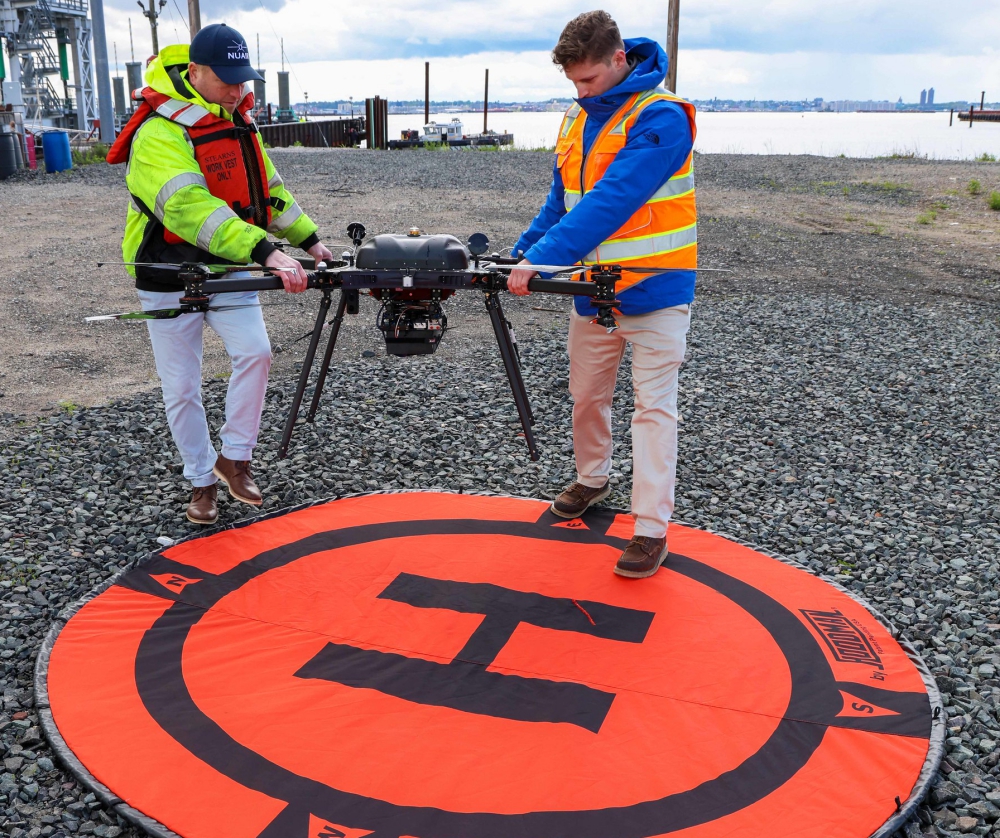One year after the Port Authority launched a new Girl Scout badge to encourage and educate girls in science, technology, engineering and math careers, the agency marked the partnership by sending a box of Raspberry Rally cookies across the Hudson River. In just 15 minutes, the 10-ounce box of cookies traveled from Greenville Yards in Jersey City, N.J., to Brooklyn, N.Y., without crossing a bridge or a tunnel or riding a boat.
The precious commodity of cookies, procured by a neighbor of the agency’s program director of innovation, provided the payload for the agency’s first test of a small, unmanned aircraft used for delivery purposes. Program Director Seth Wainer chose the cookies to highlight the Port Authority’s support of the Girl Scouts Heart of New Jersey (GSHNJ)’s Port Authority educational patch for cadettes, seniors and ambassadors.
On a recent May morning with clouds threatening to rain on a small crew of the agency’s emergency management staff, Port Authority police, New York New Jersey Rail (NYNJR) officials and NUAIR personnel, a black heavy-lift autonomous drone lifted 150 feet up from the gravel of Greenville Yards and sped across the Hudson River.
Within 15 minutes, the drone flew more than 3 miles across the river to the 65th Street Rail Yard in Brooklyn, which is the eastern terminus of NYNJR, the Port Authority’s short line marine railroad. A one-way trip from Newark Liberty International Airport to Brooklyn could have taken up to an hour for the 25-mile route by land. For the drone, it took all of 10 minutes to return from Brooklyn to Jersey City. The Port Authority and NUAIR staff confirmed the payload on arrival, then opened the box and shared a cookie toast to the success of the demo.



